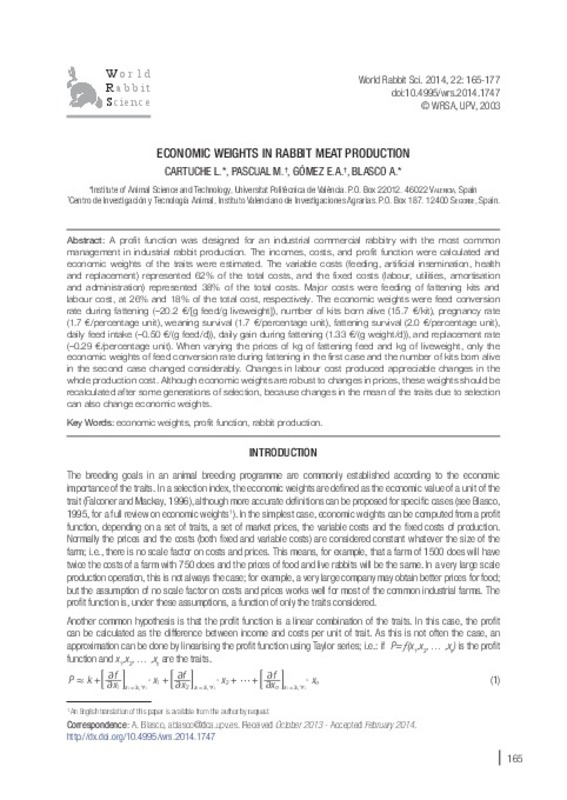JavaScript is disabled for your browser. Some features of this site may not work without it.
Buscar en RiuNet
Listar
Mi cuenta
Estadísticas
Ayuda RiuNet
Admin. UPV
Economic weights in rabbit meat production
Mostrar el registro completo del ítem
Cartuche, L.; Pascual, M.; Gómez, EA.; Blasco, A. (2014). Economic weights in rabbit meat production. World Rabbit Science. 22(3):165-177. https://doi.org/10.4995/wrs.2014.1747
Por favor, use este identificador para citar o enlazar este ítem: http://hdl.handle.net/10251/40438
Ficheros en el ítem
Metadatos del ítem
| Título: | Economic weights in rabbit meat production | |
| Autor: | Cartuche, L. Pascual, M. Gómez, E. A. Blasco, A. | |
| Fecha difusión: |
|
|
| Resumen: |
[EN] A profit function was designed for an industrial commercial rabbitry with the most common management in industrial rabbit production. The incomes, costs, and profit function were calculated and economic weights of the ...[+]
|
|
| Palabras clave: |
|
|
| Derechos de uso: | Reserva de todos los derechos | |
| Fuente: |
|
|
| DOI: |
|
|
| Editorial: |
|
|
| Versión del editor: | https://doi.org/10.4995/wrs.2014.1747 | |
| Código del Proyecto: |
|
|
| Agradecimientos: |
The authors thank O. Rafel, J. Ramon and Dr. M. Piles, Rabbit Unit of IRTA, and C. Torres and Prof. M. Baselga, Institute of Animal Science and Technology of the Universitat Politecnica de Valencia, for their comments. The ...[+]
|
|
| Tipo: |
|








